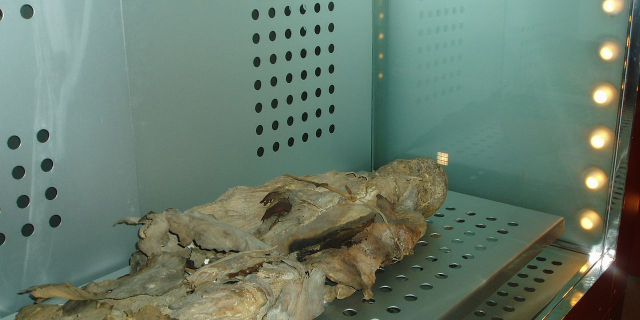Teleférico del Teide
( Teide Cableway )Teide Cableway (Spanish: Teleférico del Teide) is an aerial tramway that goes up Mount Teide, the highest peak in Spain, located in Teide National Park in Tenerife, Canary Islands. Starting at the base station at 2,356 metres (7,730 ft) above sea level, it ascends to the top station at 3,555 m (11,663 ft) in eight minutes, at a maximum speed of 8 m/s (26 ft/s) and carrying 44 people per cabin. Conceived in 1929, construction of the cableway started on 5 September 1963 and was completed on 27 July 1971, starting operations on 2 August 1971. It was renovated between 1999 and 2007.
 The top station
The top stationWhile various proposals were made over the years for the construction of a cable car to facilitate the ascent of Mount Teide, the project that led to building the cable car was initiated by lawyer Andrés de Arroyo y González de Chávez. In 1929 he visited Germany and, inspired by the cable cars in the region of Zugspitze, on his return to Tenerife he started working on a project to do the same for Teide, paying all expenses.
In 1930, civil engineer José Ochoa Bejumea, of Caminos Canales y Puertos, presented an initial design, with two sections: one with two cabins each holding 35 people and operating between Montaña Majúa and Montaña Fría; the second with a single cabin taking 15 people to the terminus and back.[1] Some 30 years later, after many years of negotiations and modifications to the initial project, Teleférico del Pico del Teide - a society created on 15 October 1959 for the operation of a cable car service - managed to come to an agreement with the Town Hall of La Orotava, acquiring the land needed for construction, in exchange for a school already built in Aguamansa and about 800 m² of land.
In 1960, the final design was finished by Miguel Pintor Domingo, of Caminos, Canales and Puertos, and Francisco Trujillo Armas. Based on the 1930s design, the base station was moved the base station to its current location to reduce the cable length and remove one of the towers. The design used the slope of the terrain to simplify the towers to the intermediate station, and to avoid the use of towers to the terminus.[1]
Land surveys to define the final locations of the stations and four towers was started in April 1962 and completed in 1963. Construction started on 5 September 1963 with the excavations for the road to the base station, and lasted eight years. The foundations and civil structures were constructed by Entrecanales y Tabora S.A., with the cable car installed by the Italian company Ceretti e Tanfani S.A. Construction material was initially moved by workers and donkeys until a hoist and auxiliary cable car were installed in 1967.[1]
Construction was inaugurated on 18 July 1971, completed on 27 July 1971, and the cableway started operating on 2 August 1971.[1] It was renovated between 1999 and 2007, with new towers, cables, and cable cars, as well as remodelling of the stations and renewal of the machinery and electrics.[1]
































Add new comment